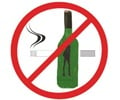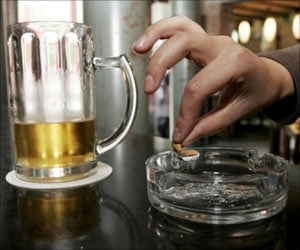Researchers have found that rats, which are socially isolated at a critical period of adolescence, are more likely to get addicted to amphetamine and alcohol.

"Basically the animals become more manipulatable," said Hitoshi Morikawa, associate professor of neurobiology in the College of Natural Sciences. "They're more sensitive to reward, and once conditioned the conditioning takes longer to extinguish. We've been able to observe this at both the behavioral and neuronal level."
Morikawa said the negative effects of social isolation during adolescence have been well documented when it comes to traits such as anxiety, aggression, cognitive rigidity and spatial learning. What wasn't clear until now is how social isolation affects the specific kind of behavior and brain activity that has to do with addiction.
"Isolated animals have a more aggressive profile," said Leslie Whitaker, a former doctoral student in Morikawa's lab and now a researcher at the National Institute on Drug Abuse. "They are more anxious. Put them in an open field and they freeze more. We also know that those areas of the brain that are more involved in conscious memory are impaired. But the kind of memory involved in addiction isn't conscious memory. It's an unconscious preference for the place in which you got the reward. You keep coming back to it without even knowing why. That kind of memory is enhanced by the isolation."
The rats in the study were isolated from their peers for about a month from 21 days of age. That period is comparable with early-to-middle adolescence in humans. They were then tested to see how they responded to different levels of exposure to amphetamine and alcohol.
The results were striking, said Mickaël Degoulet, a postdoctoral researcher in Morikawa's lab. The isolated rats were much quicker to form a preference for the small, distinctive box in which they received amphetamine or alcohol than were the never-isolated control group. Nearly all the isolated rats showed a preference after just one exposure to either drug. The control rats only became conditioned after repeated exposures.
Advertisement
"When you drink or take addictive drugs, that triggers the release of dopamine," he said. "People commonly think of dopamine as a happy transmitter or a pleasure transmitter, which may or may not be true, but it is becoming increasingly clear that it is also a learning transmitter. It strengthens those synapses that are active when dopamine is released. It tells our brain that what we're doing at that moment is rewarding and thus worth repeating."
Advertisement
Morikawa and Whitaker have also been able to document these changes at the neuronal level. Social isolation primes dopamine neurons in the rats' brain to quickly learn to generate spikes in response to inputs from other brain areas. So dopamine neurons will learn to respond to the context more quickly.
If the control, group-housed rats are given enough repeated exposure to amphetamine, they eventually achieve the same degree of addiction as the socially isolated rats. Even from this point of comparable addiction, however, there are differences. It takes longer for the socially isolated rats to kick the addiction to amphetamine when they're exposed to the same extinction protocols. (They spend time in the same environments, but amphetamine is no longer available.)
"So the social isolation leads to addiction more quickly, and it's harder to extinguish," said Whitaker.
Whitaker said that the implications of these findings for addiction in humans are obvious. There is a rich literature that documents the negative effects of social isolation in humans, as well as a great deal of evidence that addiction in rats and humans is functionally similar at the neurological level.
"It's not a one-to-one correlation, but there are socially impoverished human environments," she said. "There are children who are neglected, who have less social input. It's reasonable to make guesses about what the impact of that is going to be."
Morikawa points out that their findings may also have implications for how social isolation during adolescence affects conditionability when it comes to other kinds of rewards.
"We think that maybe what's happening is that the brain reacts to the impoverished environment, to a lack of opportunities to be reinforced by rewarding stimuli, by increasing its sensitivity to reward-based conditioning," said Morikawa. "The deprived brain may be overinterpreting any reward it encounters. And if that's the case, it's likely that you are more conditionable not only to drugs but to any sort of reward, including food reward. One interesting possibility is that it might also make adolescents more prone to food 'addiction,' and then to obesity."
Source-Eurekalert















